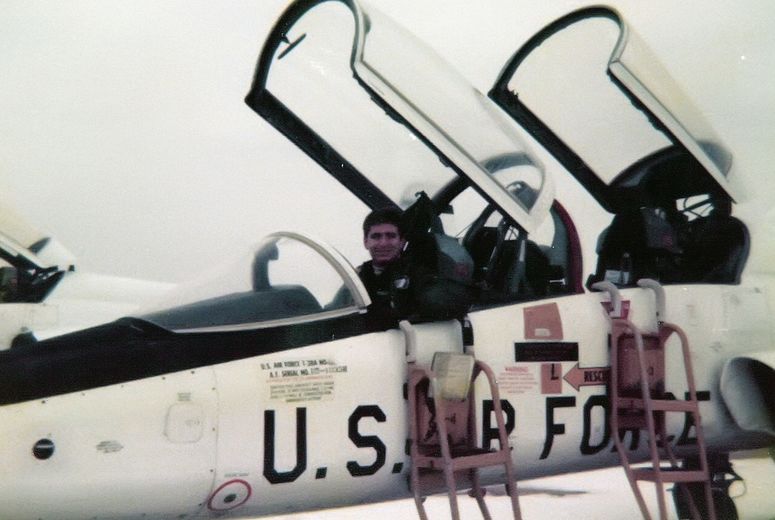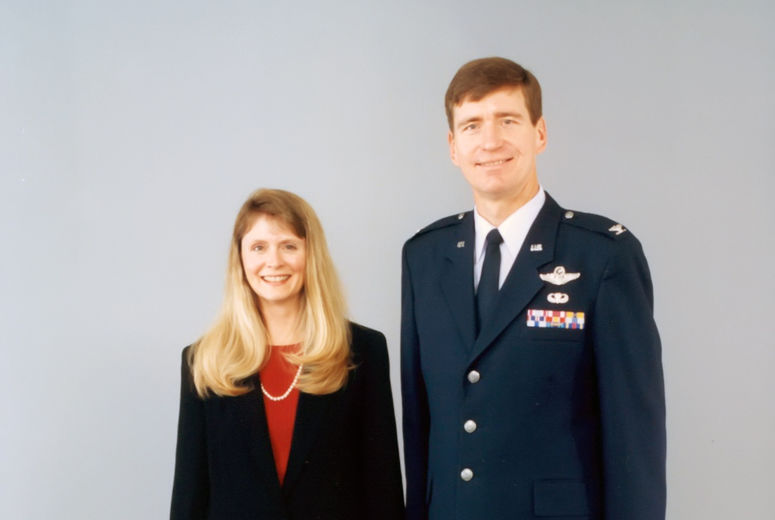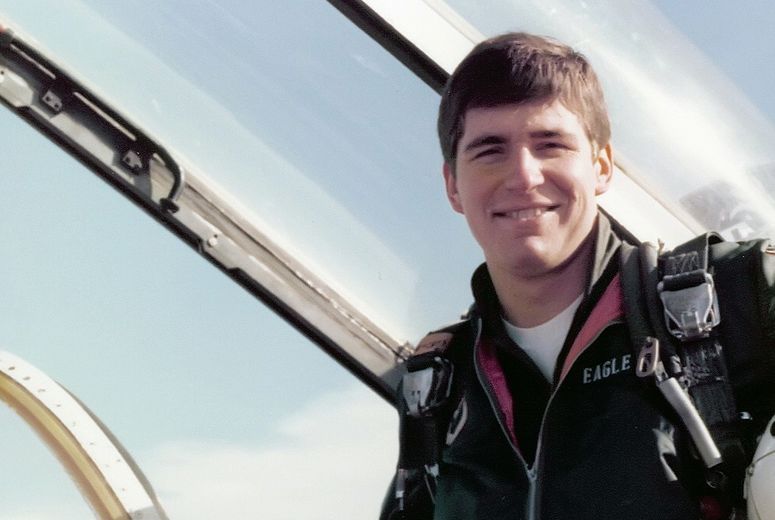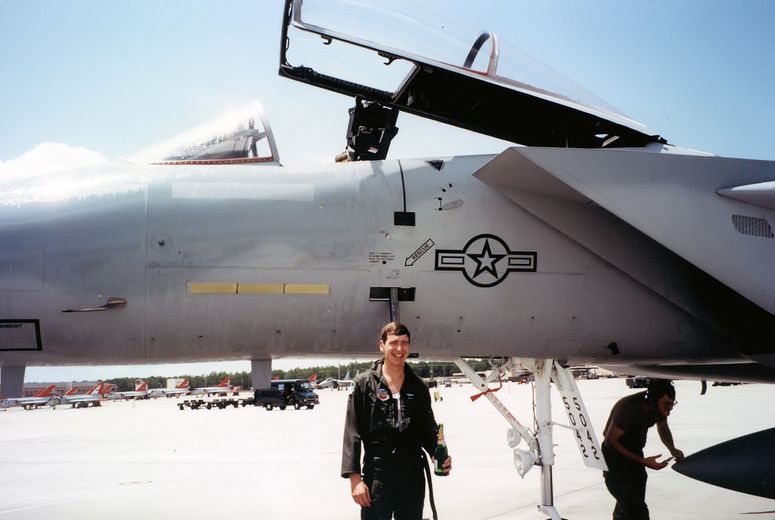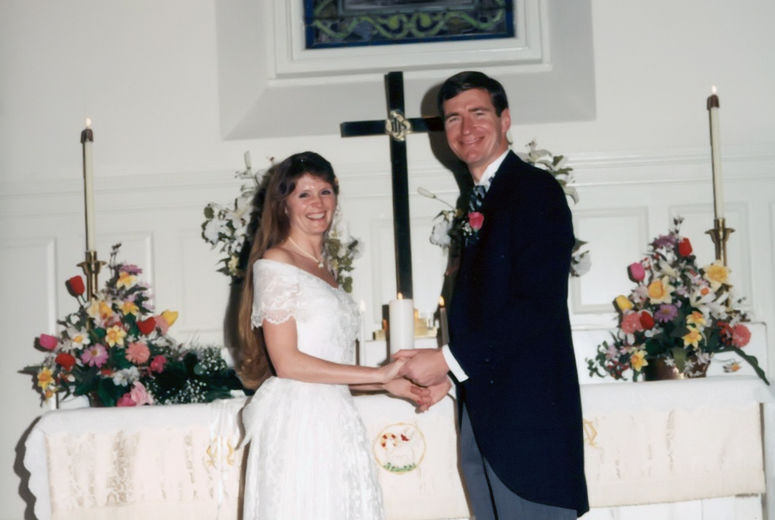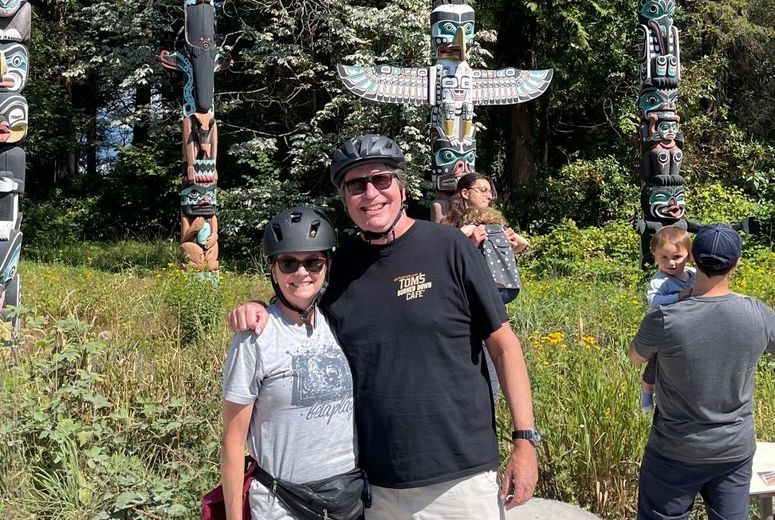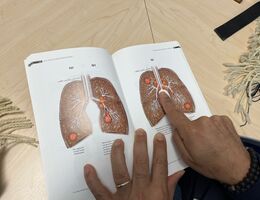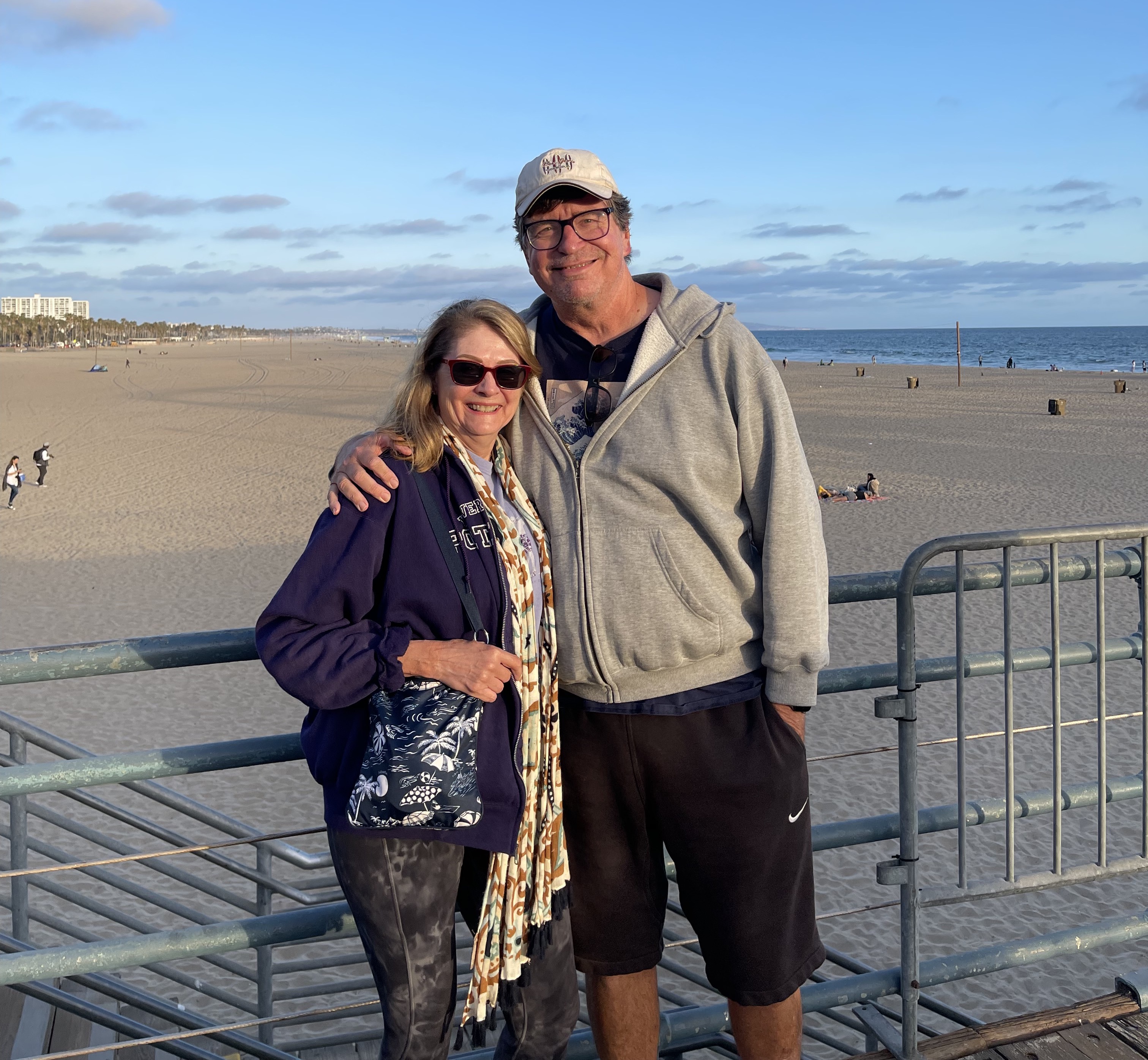

Daniel Eagle, a former Air Force officer who served for nearly 40 years, speaks on the significance of his cancer’s early detection and treatment course.
As Daniel Eagle and his wife walked out of the medical clinic where he'd recently received a diagnosis of prostate cancer, the 67-year-old retired Air Force officer recalls affirming: “Today is the day I become a cancer survivor.”
He partnered with the oncology care team at Loma Linda University Medical Center–Murrieta (LLUMC–Murrieta) earlier this year to receive a month-long radiation treatment. Eagle chose to treat his cancer through a combination of radiation and hormone therapy, resulting in a significant drop in his prostate-specific antigen (PSA) — a measure used to indicate prostate cancer.

Daniel Eagle met his wife of 33 years during his time in the military.
For September’s Prostate Cancer Awareness Month, Eagle shares his experience with prostate cancer, including the critical roles that screening, medical technology, and a robust support system have played in his healing journey.
Throughout nearly 40 years of his military service, Eagle says he attended regular checkups and grew familiar with the importance of monitoring prostate health. He continued his health checkups with Veterans Affairs after his retirement in 2010, after which a series of blood tests revealed Eagle’s PSA numbers increasing over time. For years Eagle worked with his urologist to aggressively monitor his PSA levels. An initial biopsy proved negative for prostate cancer, but years later, in November 2022, a second biopsy detected Eagle’s early-stage cancer — meaning all cancer cells are contained within the prostate and have not spread elsewhere in the body.
Read: My PSA is elevated — what happens next?
Eagle says he’d mentally prepared for the possibility of the diagnosis over the years as his PSA levels steadily climbed to a high of 19. He’d already researched the disease, considered the next steps, and watched and read survivors' testimonials. Upon reading a book his friend wrote about his experience with cancer, Eagle thought to himself: “If it [prostate cancer] ever happens to me, I’m going to bite the bullet and chase after it until it gets reconciled.”
Eagle’s cancer was deemed to be of intermediate risk, says David Bush, MD, the radiation oncologist who treated Eagle at LLUMC–Murrieta. Because certain indicators placed Eagle in a higher risk group for having a disease that would likely progress and cause problems in his lifetime, Bush says he required treatment.
“Fortunately, prostate cancer is one of those cancers with an established screening criterion program that works, which is the PSA test,” Bush says, “and if patients follow regular screenings, they can catch cancer early. When prostate cancer is caught early enough, like in Mr. Eagle's case, patients who require treatment often get to choose which kind they receive.”
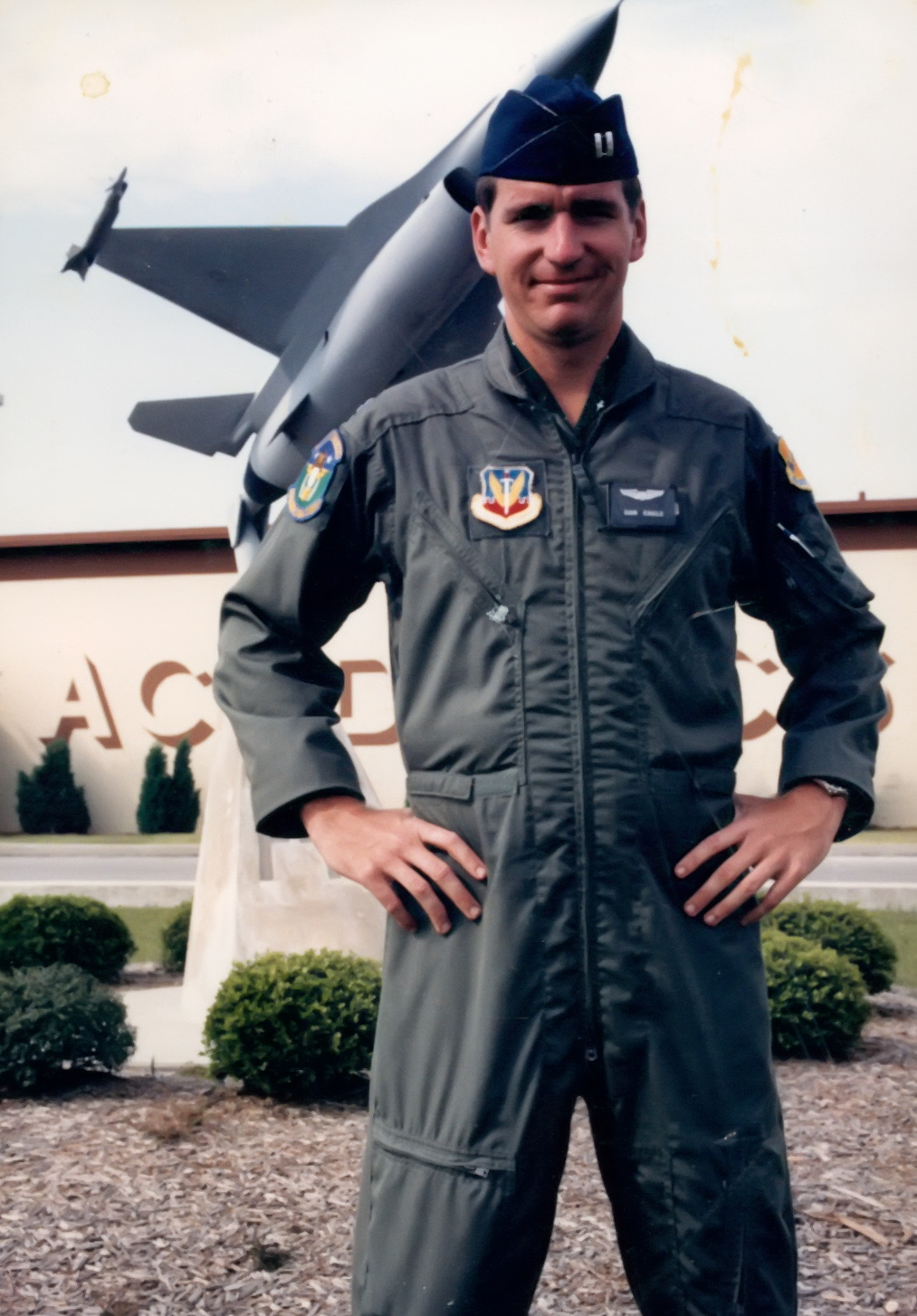
Daniel Eagle served in the U.S. Air Force for nearly 40 years.
Treatment options for Eagle included surgical removal of the prostate (prostatectomy) or undergoing radiation therapy that targets cancer cells in the prostate. Eagle says he weighed risks versus rewards for his particular circumstance and ultimately opted for radiation therapy.
A resident of Menifee, Eagle says he appreciated the opportunity to receive treatment at LLUMC–Murrieta, a roughly 20-minute drive from home, instead of driving to a radiation center in Los Angeles, San Diego, or Palm Springs. There, he received 28 daily doses of intensive modulated radiation therapy (IMRT) — a treatment that aims X-rays beams to target the tumor and minimize radiation to surrounding tissue.
A multi-disciplinary effort goes into the planning, preparation, and delivery of IMRT, Bush says. As a radiation oncologist, Bush says he works with Loma Linda University dosimetrists and physicists to create a safe, effective treatment approach personalized for each patient’s IMRT. LLUMC–Murrieta radiation therapists operate the equipment to deliver IMRT, while radiation oncology nurses and oncology nurse navigators work with patients to streamline care and guide them through the process.
Meeting and speaking with all the amazing oncology care people was something I looked forward to and was actually sad to leave behind after treatment.Daniel Eagle
LLUMC–Murrieta is the only community cancer center in the region designated by the College of Surgeons. Bush says its comprehensive program integrates medical, surgical, and radiation oncology, pathology, and various other specialties involved in cancer care.
Throughout his month-long treatment, Eagle says his wife, other loved ones, and LLUMC–Murrieta cancer care team members provided the whole-person care and support he needed.
“Every time, I was met in the waiting room with smiling faces and escorted back within about five minutes of when my appointment was scheduled,” he says. “I interacted freely with staff who were very professional, engaging, and positive in their outlook. Dr. Bush answered every one of my questions and addressed all my concerns during our weekly check-ins. Meeting and speaking with all the amazing oncology care people was something I looked forward to and was actually sad to leave behind after treatment.”

Daniel Eagle and his wife are avid cyclists and travelers.
An avid bicyclist, Eagle says he was glad he could continue his hobby throughout and after radiation therapy. He and his wife of 33 years have biked in Portland, Oregon, national parks like Yosemite with their dog, Murphy, and along a vast stretch of the west coast. The Eagles are also seasoned travelers, having lived in over 10 countries throughout their military service together and visiting many more since then.
Eagle will continue hormone therapy for two years and regularly follow up with his urologist. He says a recent blood test revealed his PSA has dropped to a “promising” level of 0.06 and hopes the levels continue to decrease. Regular screening enabled Eagle to catch his cancer early on, he says, allowing him to get treated as soon as possible.
“I recommend anyone who finds themselves in a similar position to go get it checked out,” he says. “This is serious stuff, and my message is to follow up. Results will either allay your fears or help you understand the next best steps and go ahead.”
Experts at LLUMC–Murrieta are committed to providing compassionate, comprehensive, and personalized care along every step of your cancer journey. Learn more about cancer screening and treatment options online or call 951-290-4148.

